Big in Japan: Decentralisation in the Heartland of High-Tech

In recent years we’ve seen the crypto-asset market achieve immense growth despite staggering volatility. Since posting infamous gains in 2017, crypto asset prices have been through a steep drop and tepid recovery — but usership continues to climb. Highlighting this trend, the Cambridge Center for Alternative Finance reported crypto-asset users hit 35 million in Q3 of 2018, up from 18 million at the end of 2017. More recent figures suggest the number of blockchain wallets, necessary to hold crypto, now sits at 40 million.
For many, these numbers represent a growing awareness of the crypto asset class around the world. However, the prevalence of digital assets has come with a new set of challenges for global governments. Although some nations continue to embrace the emergence of digital assets, others lag or have sought a complete ban. As a result of these diverse responses, the prevalence of crypto assets remains regional.
Long seen a prominent tech hub, it’s logical that Japan has become a leader in crypto-asset regulation and mainstream adoption. But how exactly did this happen? In short, intentional, systematic decision-making. However, before we can understand Japan’s journey, it’s essential to acknowledge the unique challenges facing crypto-asset adoption and the rise of decentralisation.
Decentralisation: A Balancing Act
So, why are some governments more resistant to the rise of crypto-assets? In general, decentralised technology represents a new world order that aims to axe the middleman. By relying on mechanisms that function in the absence of trust, crypto assets and underlying blockchain technology are an undeniable threat to long-standing institutions — like governments and central banks.
With their source of revenue and status as sole overseer at stake, it’s not surprising that many governments continue to resist the adoption of crypto-assets. However, for other nations, the mantra “if you can’t beat them, join them” rings true. Countries like Japan have sought to stay ahead of the curve by embracing the inevitable rise of decentralisation and the emergence of digital currency.
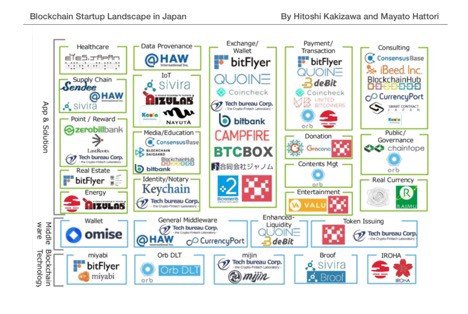
Source: Blockchain in Japan (EU — Japan Centre 2018)
However, a decentralised world remains a long-term reality, with mainstream adoption and deep integrations seemingly years away. However, by establishing a nurturing crypto-asset ecosystem, progressive nations can position themselves in an advantageous position. As one such nation, Japan continues to build a robust framework of crypto-asset regulation while supporting initiatives that bolster the reach of decentralisation.
The Japanese Experience
According to data released by Japan’s financial watchdog, the Financial Services Agency (FSA), at least 3.5 million people were trading cryptocurrency on Japan’s 17 domestic exchanges as of March 2019. Of these traders, 84% are between the ages of 20 and 40. The regulatory body also reported that the trading volume of bitcoin in Japan soared from $22 million in March 2014 to $97 billion in march 2017.
Further, bitcoin trading on margin, credit, and futures contracts catapulted from $2 million in 2014 to $543 billion in 2017. The government’s ability to track and report these numbers in itself validates the nation’s status as a global crypto-asset hub. However, as mentioned, arriving at this reality was no coincidence. Japan’s journey has invariably set the tone of today’s local ecosystem — let’s take a closer look.
Exchange Hacks
Japan’s experience with exchange hacks provides a unique opportunity to analyse the results of government regulation. The country is home to the two biggest exchange hacks of all time — that of Mt. Gox and Coincheck. Once handling around 80% of global bitcoin trades, Tokyo-based Mt. Gox filed for bankruptcy in 2014 after 750,000 bitcoin or $450 million was lost through a hack that went undetected for years.
Coincheck, also based in Tokyo, suffered a massive hack in January 2018 with losses totalling $533 million in digital currency. As such, when the Japanese government began to intervene heavily in domestic crypto-asset markets, the move was expected. And while these hacks remain a blemish of the past, they have also served to bolster Japan’s proactive approach to crypto-asset regulation.
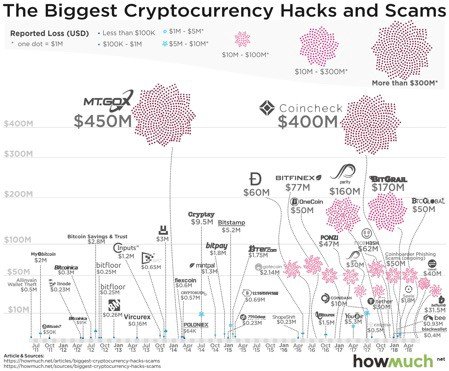
Source: How Much
The Rise of Regulation
In 2017, Japan became the first country to regulate crypto-asset exchanges at the national level. According to recent figures, there are now 19 registered exchanges in the country — however, not all are operational. Since moving to regulate exchanges, Japanese officials have moved to implement further checks and balances in hopes of leveraging the fintech industry, improving protections, and driving economic growth.
In the aftermath of high-profile hacks, the FSA first moved to restrict the use of internet-connected “hot wallets” used for storing digital currency. However, these restrictions have since bolstered the use of offline “cold wallets” — necessitating further restrictions announced in 2019. The Japanese government has shown diligence and tolerance in response to the rise of crypto-assets, successfully driving industry innovation.
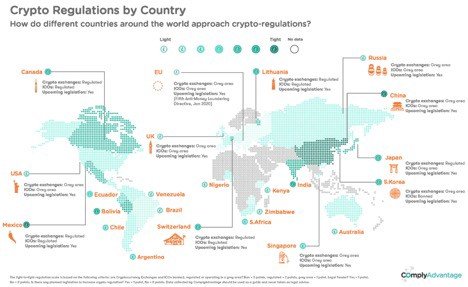
Japan’s Thriving Sandbox
In June 2018, the Japanese government introduced the sandbox regime with mandate to support the growth of emerging business models and technologies. Both domestic and international companies can apply to trial projects that employ emerging tech like blockchain andartificial intelligence (AI) across several use cases. Projects on trial operate within a virtual environment to determine real-world viability. If successful, the government is committed to engaging in a deregulation process that streamlines future innovation — and the results are rolling in.
Companies like Crypto Garage have come to rely on this sandbox environment to launch proof-of-concept experiments, fostering greater innovation. The company will provide several crypto-asset exchanges in Japan with access to SETTLENET, enabling the use of a stablecoin pegged to the Japanese yen. As the first stablecoin approved by the government, the JPY-Token will facilitate the transfer of digital assets without counterparty risk.
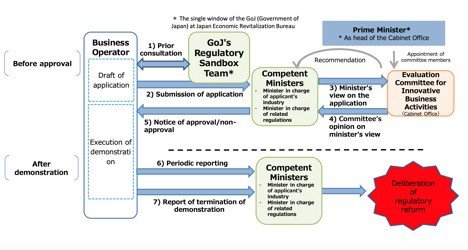
Source: 2019 Japan Experience
This initiative serves as a reminder that government support is crucial to establishing a healthy crypto-asset ecosystem. In supporting blockchain technology, the government has taken a clear stance on crypto-assets and their acceptability.
Big in Japan
But why exactly is the Japanese government so supportive of this emerging technology when so many others challenge its rise? According to some, it’s a byproduct of the reluctant policies of neighbouring countries, primarily China. Starting with a ban on ICOs, China moved to limit access to domestic cryptocurrency exchanges before setting up the “Great Firewall” to prevent Chinese citizens from accessing foreign exchange platforms. Not exactly a welcoming response.
However, in operating as a global tech leader for decades, Japan presents an attractive geographic alternative to an increasingly suspicious China. Better still, much of the technology driving decentralisation can be traced back to the island nation, bolstering experimentation and adoption. In combination with its history of technical prowess, there’s no denying that the proactive and crypto-friendly stance of Japan has been a significant driver of innovation. Further, entrenched but fair regulation has resulted in a preference for legitimate projects generating tangible benefits and undeniable value.
The Blockchain Incubator: Centrality
The New Zealand-based platform Centrality represents one such project. Similar in principle to the sandbox initiative brought forth by the Japanese government, Centrality aims to create a supportive ecosystem for those operating in the blockchain industry. By sharing resources, tech, human, or otherwise, the Centrality platform naturally improves the chances of success. When it comes to developing DApps, this collaborative approach is most beneficial — most lose 90% of their daily active users (DAU) within 90 days.
Beyond blockchain-centric considerations, the Centrality platform utilizes a native crypto-asset known as the CENNZ token. This medium of exchange is used across the platform to power DApps and facilitate transactions. In a nation hosting the world’s largest fiat to crypto exchange, the CENNZ token has the potential to build on shared fundamentals if made accessible to a broader audience.
The Japanese Ethereum: Cardano
According to project founders, Cardano is the first blockchain platform to originate from a scientific philosophy and a research-first driven approach. Cardano is an open-source, decentralised public blockchain and cryptocurrency platform that was initially funded in Japan. More recently, Cardano has begun to explore smart contract functionality, bringing about comparisons to the Ethereum blockchain — the birthplace of self-executing agreements.
As the Cardano project generates ample press, its native cryptocurrency ADA has also risen to prominence. In response, the Cardano market cap has reached a value of over $900 million. As Cardano positions ADA at the forefront of the coworking trend, the company has begun to build communities that accept ADA. For instance, Emurgo, the commercial arm of Cardano, continues to engage with local merchants with an aim bolster adoption and mainstream integrations.

Japan’s National Cryptocurrency: Monacoin
Brought to market in 2014, Monacoin has become known as “the first Japanese cryptocurrency.” A hard fork of the Litecoin blockchain, MonaCoin functions as an open-source P2P payment network. That is, a decentralised currency made for Japanese citizens. Today, it has arguably become Japan’s national alternative, representing the most active cryptocurrency community in Japan. Although the total market cap of MonaCoin continues to trend in line with the broader market, it remains robust at over $53 million.
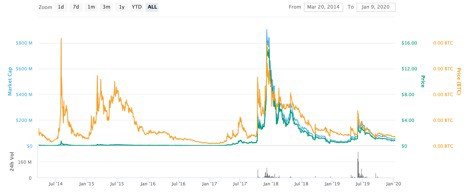
Source: CoinMarket Cap
Highlighting its rise to prominence, the Japanese government has legally accepted MONA coins. Further, the cryptocurrency is being widely used online and in physical stores. Reports also suggest the coin MONA has been used to purchase land in Japan, and the Zaif ATMs now allow payments in MONA coins. This national success story further validates the popularity of digital currency across the country.
HODLing Out in Japan
Although Japan has found itself at the forefront of decentralised innovation, a unique set of conditions has led to its current positioning. Although its strong industrial background is an undeniable catalyst, first-hand experience and external influences have played an equal part in the nation’s tech trajectory.
In combination with geopolitical influences, the country has learned from a tumultuous past of exchange hacks, pursued a firm but fair approach to regulation, and continues to support the ecosystem through meaningful consultations. In a world of polarized reactions to blockchain technology, it’s apparent that Japan’s approach is one of support. The country’s flourishing ecosystem is a testament to the power of public support — and it appears the movement has only just begun.
Posted from my blog with SteemPress : https://cryptohype.tech/big-in-japan-decentralisation-in-the-heartland-of-high-tech/
Congratulations @crypto.hype, you have received a 30% upvote. I'm the Vietnamese Community bot developed by witness @quochuy and powered by community SP delegations
Japan has always been in the future. BOI has never been there but it would be a nice experience.
Thank you for the article - I didn't know about Monacoin before. Gotta look into it!
Have a nice day! Until the next time we meet!
Hi, @crypto.hype!
You just got a 0.1% upvote from SteemPlus!
To get higher upvotes, earn more SteemPlus Points (SPP). On your Steemit wallet, check your SPP balance and click on "How to earn SPP?" to find out all the ways to earn.
If you're not using SteemPlus yet, please check our last posts in here to see the many ways in which SteemPlus can improve your Steem experience on Steemit and Busy.